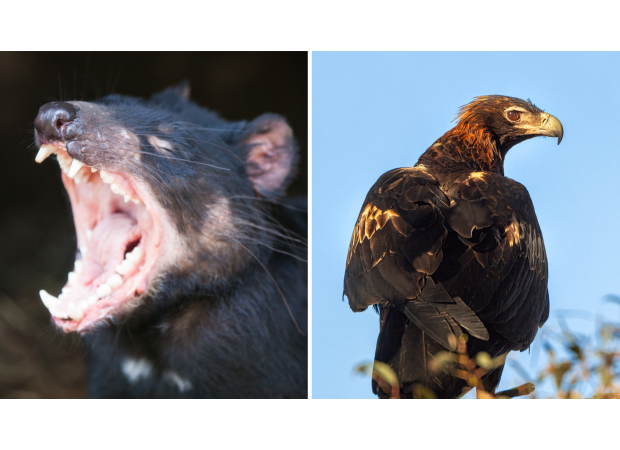Tasmanian devils and eagles are in danger of disappearing due to the threat of avian flu, according to a top veterinarian's warning.
Australia's chief vet warns that the recent spread of the H5N1 bird flu strain could endanger the survival of Tasmanian devils.

Australia's top veterinarian has issued a warning about the potential threat of the H5N1 strain of bird flu to Tasmanian devils. This new strain has been spreading rapidly around the world and has already reached every continent except for Australia. However, experts predict that it may arrive in the country this spring as migratory birds from the Northern Hemisphere make their way south.
Beth Cookson, the Commonwealth Chief Veterinary Officer, has expressed concern over the potential impact of this virus on Australia's native species. She has stated that if the H5N1 strain were to reach Australia, the consequences could be catastrophic and could even lead to local extinctions. This is a cause for concern, as scavenging animals and predatory birds are particularly vulnerable to infection through consuming infected birds or animal carcasses.
During a recent gathering of government officials and animal welfare groups, Cookson emphasized that Tasmanian devils and Australia's eagle population are at high risk of being affected by this deadly strain of bird flu. This warning comes after the devastating effects that the virus has had on animal populations in South America. In 2023, Peru lost 40% of its pelicans to avian influenza, while in Argentina, 97% of the elephant seal pups and over 650,000 native birds died from the virus.
Australia is currently the only continent without the H5N1 strain, as it recently reached Antarctica earlier this year. If it were to make its way to Australia, it could be a major blow to the country's struggling native species. Jack Gough, the Advocacy Director of the Invasive Species Council, expressed concern over the potential impact on Tasmanian devils in particular. He stated that these animals are already facing numerous threats, including a facial tumor, habitat destruction, and road accidents. The introduction of this deadly strain of bird flu could be the final straw that pushes them towards extinction.
Gough also warned that there is a lack of funding and planning in place to address this potential threat. He stated that there are currently no detailed plans to protect Tasmanian devils, eagles, black swans, sea lions, or other species from the virus. This is a cause for concern, as infected birds can remain a source of infection for weeks, putting animals that come into contact with them at risk.
It is crucial for people to be aware of the risks and take precautions to prevent the spread of the virus. The public is urged to avoid contact with sick, dead, or dying wild birds and to report any such incidents to the Emergency Animal Disease Hotline. The government and animal welfare groups are working together to monitor the situation and take necessary measures to protect Australia's native species from the potential threat of the H5N1 strain of bird flu.
7 Views


